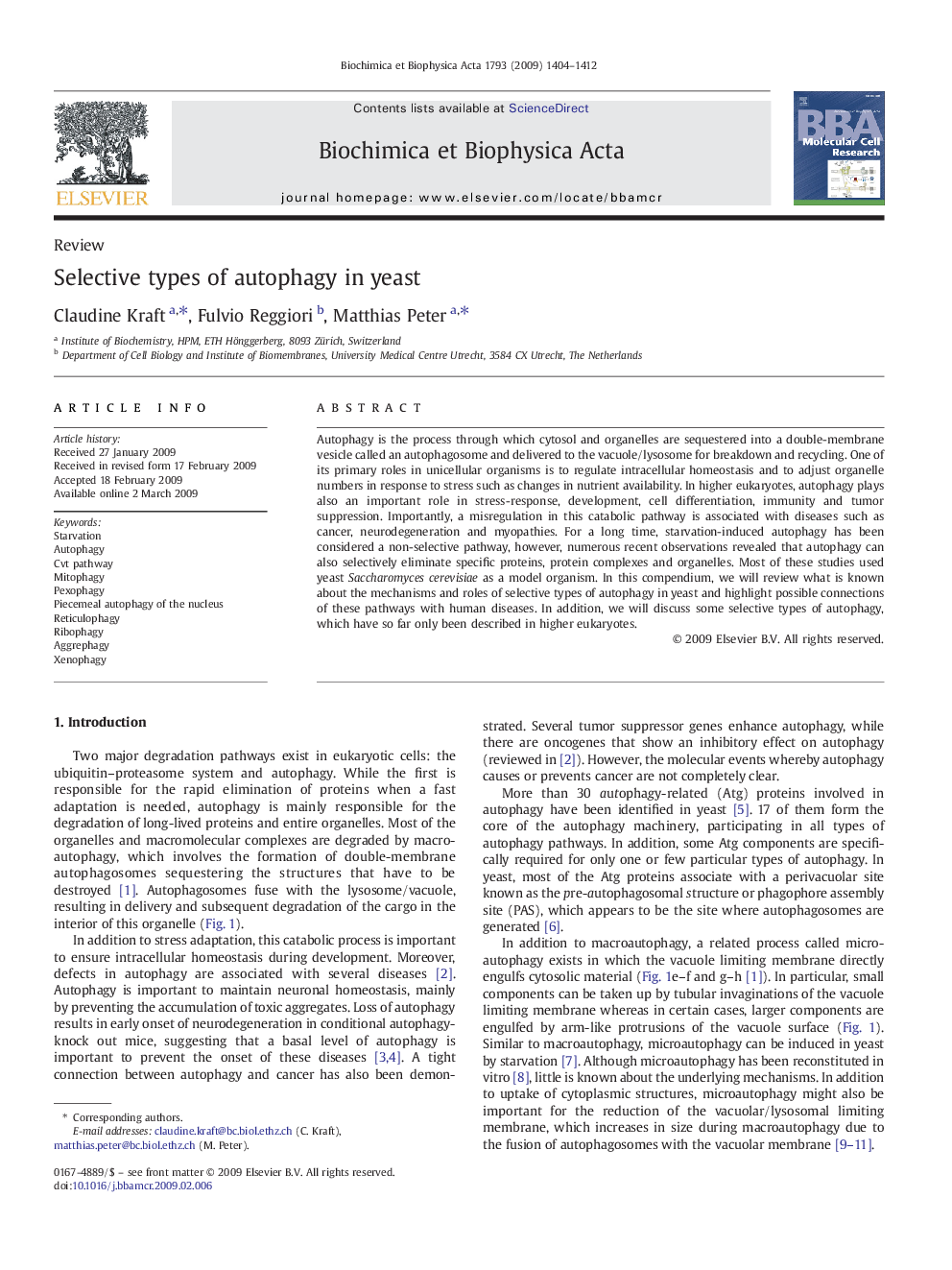| کد مقاله | کد نشریه | سال انتشار | مقاله انگلیسی | نسخه تمام متن |
|---|---|---|---|---|
| 1951164 | 1055747 | 2009 | 9 صفحه PDF | دانلود رایگان |

Autophagy is the process through which cytosol and organelles are sequestered into a double-membrane vesicle called an autophagosome and delivered to the vacuole/lysosome for breakdown and recycling. One of its primary roles in unicellular organisms is to regulate intracellular homeostasis and to adjust organelle numbers in response to stress such as changes in nutrient availability. In higher eukaryotes, autophagy plays also an important role in stress-response, development, cell differentiation, immunity and tumor suppression. Importantly, a misregulation in this catabolic pathway is associated with diseases such as cancer, neurodegeneration and myopathies. For a long time, starvation-induced autophagy has been considered a non-selective pathway, however, numerous recent observations revealed that autophagy can also selectively eliminate specific proteins, protein complexes and organelles. Most of these studies used yeast Saccharomyces cerevisiae as a model organism. In this compendium, we will review what is known about the mechanisms and roles of selective types of autophagy in yeast and highlight possible connections of these pathways with human diseases. In addition, we will discuss some selective types of autophagy, which have so far only been described in higher eukaryotes.
Journal: Biochimica et Biophysica Acta (BBA) - Molecular Cell Research - Volume 1793, Issue 9, September 2009, Pages 1404–1412